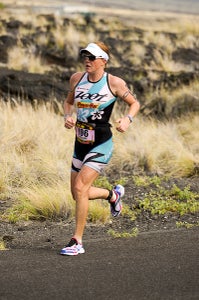Ask A Pro: Fitting In To New Training Groups

Photo: Erick Rasco
Samantha McGlone provides tips on fitting in when joining a new triathlon training group.

Q: I want to mix up my training and join some group workouts such as Masters swims and the local shop ride. What should I know before showing up so I don’t anger the natives?
A. I train in Tucson, Ariz., where besides spectacular weather, you will find some of the best group workouts in the country, including a large and competitive Masters program and the Shootout, a weekly road ride (read: race) that has been rolling out Saturday mornings for more than 30 years. If you don’t observe some specific rules of etiquette you can quickly find yourself under a barrage of tri-dork jokes and ridicule. I spoke to Jim Stites, the head coach of the Ford Aquatics Masters squad at the University of Arizona, and he gave me the dirt on the top 10 group swimming faux pas:
10. Finishing a swim and not moving over to allow others in the lane to finish to the wall.
9. Executing a turn on the “finish” side of the lane.
8. Disregarding the pace clock.
7. Disrupting the flow of a lane by not following the set design (ex.: starting out too fast or too slow).
6. Leaving 5 seconds behind the swimmer in front of you (10 seconds is considered the rule
unless the lane is particularly crowded).
5. Repeatedly touching, grabbing or groping the feet of the swimmer in front of you without passing.
4. Talking or socializing while the coach is explaining the set.
3. Leading the lane without understanding the set or intervals.
2. Arriving to practice after the main set has begun, forcing a side-by-side lane to circle.
1. Choosing the wrong lane (too fast or too slow).
If it sounds like swimmers are anal retentive, some cyclists take elitism to a whole new level. Here are some key things to remember when riding in a pack or organized road ride:
– Don’t ride a triathlon bike on a group ride if you can help it. Bring a road bike or if you must ride a TT bike stay off the aerobars in the pack.
– No one cares about your VO2max or your lactate threshold. Obsessively checking your heart rate monitor to make sure you are “in the zone” is also out. Go with the flow of the ride and leave the gadgets at home. Watts are the only numbers that count.
– Drafting is legal and encouraged in cycling. Don’t leave a big gap between you and the rider in front. Point out obstacles, bumps, potholes and road signs for the riders behind you. Do not swerve suddenly at the last minute to avoid something in the road. Learn how to bunny hop.
– If you puncture in the pack, raise your arm to signal that you have a flat tire and pull smoothly to the right, out of the group and onto the shoulder of the road to fix it.
Look a few riders ahead to see when the pack is accelerating or slowing down suddenly. Be aware and ready to respond to anything.
– Compression socks on the bike are a no-no. Cyclists use them but they are considered strictly post-ride recovery attire.
– Store stops are your friend. Take the opportunity to rest and fuel up or you will get dropped by the caffeinated, sugar-rushed pack on the way home.
Don’t be discouraged by these long lists of rules. Most training groups operate under a “more is merrier” philosophy and are happy to have new members. Smile, introduce yourself and chat with the locals. Mention that you are new to the group and ask the more experienced athletes for some tips. There is no faster way to make friends than to ask an athlete to share his vast knowledge (accurate or not) with a rookie.